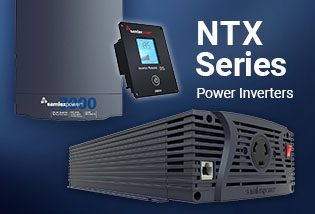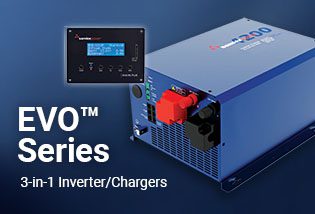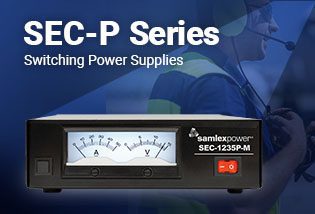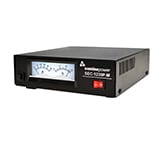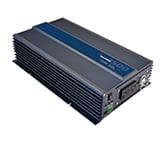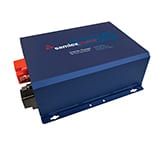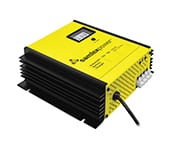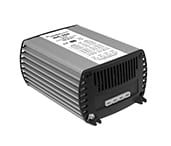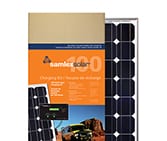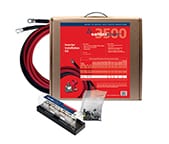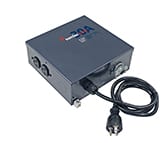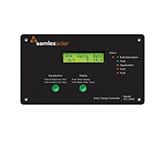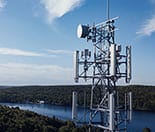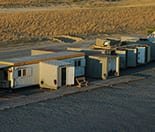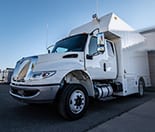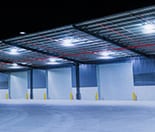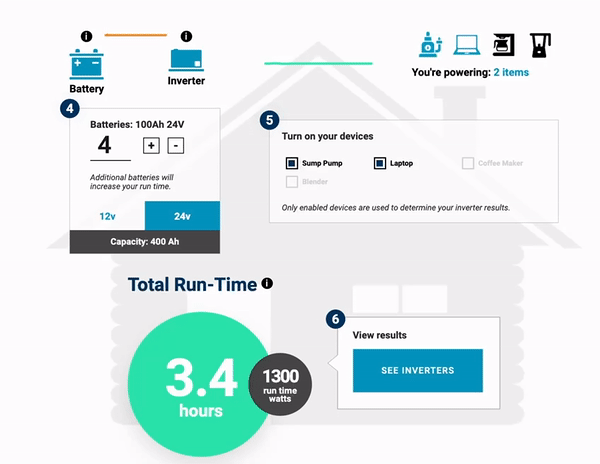If you are interested in learning about the different types of power inverters, modified sine wave and pure sine wave, it is safe to say that you are looking to power your electronic devices or commercial equipment in a remote location where utility companies do not provide service to. The idea behind a power inverter is straightforward yet immensely helpful for applications such as RV, marine, fixed off-grid, fleet, and commercial job sites. In this blog post, we will discuss what an inverter does, the different types of power inverters, and potential use cases for each of these two types of power inverters. If you are in the market for a new modified sine wave or pure sine wave power inverter, then read on.

What is an inverter?
Before discussing the differences between pure sine wave inverters and modified sine wave inverters it is important to first establish what an inverter is and how it fits into an electrical system in an RV, boat, off-grid cabin, truck fleet, etc. Inverters play a significant role in any scenario that requires you to power any home appliances or commercial equipment as they invert or convert the direct current (DC) output into alternating current or AC power, which is required to operate all appliances that are used in residential or commercial applications. The process of converting DC power to AC requires an inverter to take the constant DC voltage from a battery bank and change it to a sine wave curve, as shown below, which goes above and below 0 volts.

The left image shows that a modified sine wave inverter converts the DC input in multiple steps to mimic a true sine wave curve. This process is done much more smoothly in a pure sine wave inverter as indicated in the other image. As a result of the difference in how smoothly power conversion happens, there are some performance discrepancies that need to be discussed to fully understand which inverter might be the better solution for your power conversion needs.
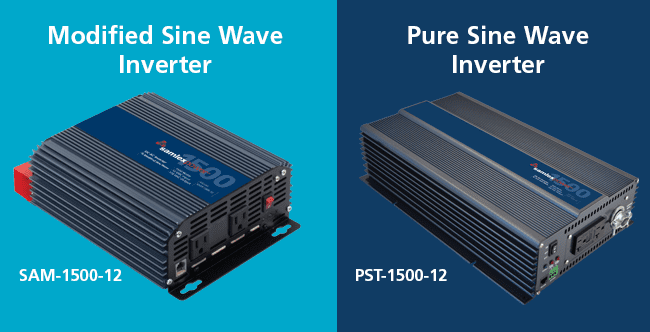
What’s the difference between Modified Sine Wave and Pure Sine Wave Inverters?
Design and Use Cases
Due to their low level of design complexity, modified sine wave inverters can be used to deliver AC power to less sensitive electronic devices such as old tube TVs or devices that don’t use a non-variable speed motor. Modified sine wave inverters are smaller in size and an affordable power conversion product suitable for applications that don’t require pure sine power — they will provide reliable power to your toaster, kettle, and water heater with no problem. Samlex’s modified sine inverters are compact and lightweight, and our 100-800 watt SAM Series inverters include a 2.1 Amps USB charging port, which is ideal for charging the newest smartphones and tablets.
That said, if you are aiming to power delicate medical equipment, a laptop, or other devices that require clean AC power to function properly, the safest option is to go with a pure sine wave inverter, which produces a near-perfect replica of true sine wave AC power. Check out this blog post which shows how Thin Air Web, a web and software development agency, found using a modified sine wave inverter made their modern electronics ‘grumpy’. They swapped their original modified inverter out for a Samlex EVO-2212 pure sine wave inverter/charger to power their business equipment with zero downtime, and fulfill their dreams of spending months at a time off-grid.
Even if it appears that your device is working well with a modified inverter, under the hood, it may be running hotter than normal, which equates to less power efficiency and more power consumption. As a result of this excessive heat, using modified sine wave inverters can negatively affect the lifetime of your devices. Additionally, you could encounter a buzzing or humming noise when using modified inverters to power your AC devices. This is because pure sine wave inverters have relatively low harmonic distortion whereas modified inverters have high harmonic distortion, hence the buzzing sound during the operation as a result of this interference.
Cost Comparison
Because of their less advanced technology, having fewer internal components, and overall relatively low complexity to produce and manufacture, modified sine wave inverters can range from 40-75% cheaper in comparison to pure sine wave power inverters of the same power output. However, while the initial cost of purchasing a pure sine inverter is typically higher, given the lower efficiency of a modified sine inverter, in the long run, it might prove more cost-effective to go with a pure sine wave inverter. Additionally, Samlex’s robust and heavy-duty line of pure sine wave power inverters come with additional battery protection features and a wide operating DC input range. All Samlex power inverters, whether modified or pure sine wave, come with a minimum 2 year warranty, are safety certified, and industry-proven to stand the test of time.
Final Verdict
Ultimately, the decision to purchase which inverter comes down to your budget and specific use case. All electronic devices sold on the market are designed for a pure sine wave system, so if your budget allows for it, Samlex suggests to always go with the safe option of purchasing a pure sine wave power inverter for the following reasons:
-
-
- Higher Efficiency of ~20-30%
- Low Risk of Interference and Noise
- Heavy-Duty Inverters
- Lower Cost in the Long-run
- Longer Product Lifespan
-
Inverter Runtime Calculator
Now that you have a better idea of which type of inverter might fit your power conversion needs, it is time to determine the approximate capacity you’d want your inverter to have in order to power all of your electronic devices, whether you are preparing your off-grid home or equipping your remote job site.
By using our easy-to-use inverter calculator you are able to visualize your potential power consumption based on the type of devices that you will be using as well as the number of your batteries. With this information, Samlex’s inverter run-time calculator will recommend a couple of inverters that will be able to meet your power conversion needs.
FAQs
Here are some frequently asked questions regarding modified and pure sine wave power inverters and potential use cases for each type of inverter:
What is a modified sine wave inverter good for?
A modified sine wave inverter is a reliable and affordable power conversion product that is ideal for use cases that don’t require pure sine wave power. For instance, here is a short list of devices you can power with a modified sine wave inverter:
-
-
-
- Toaster
- Kettle
- Laptop and phone chargers
- Some power tools
- Water and air pumps with non-variable speed motors
-
-
Will a modified sine wave inverter damage my electronics?
According to Lifewire.com, you should try to stick to pure sine wave inverters if you are aiming to power delicate or sensitive medical equipment as well as appliances that use AC motors, such as digital clocks, timers, refrigerators, and microwaves. Here are some examples of devices that may not work properly with modified sine wave and may also get damaged are given below:
-
-
- Laser printers, photocopiers, magneto-optical hard drives
- The built-in clocks in devices such as clock radios, alarm clocks, coffee makers, bread-makers, VCR, microwave ovens etc may not keep time correctly
- Output voltage control devices like dimmers, ceiling fan / motor speed control may not work properly (dimming / speed control may not function)
- Transformer-less capacitive input powered devices like (i) Razors, flashlights, night-lights, smoke detectors etc (ii) Re-chargers for battery packs used in hand power tools. These may get damaged. Please check with the manufacturer of these types of devices for suitability
- Some fluorescent lamps / light fixtures that have power factor correction capacitors. The inverter may shut down indicating overload
- Devices that use radio frequency signals carried by the AC distribution wiring
For more information on this topic, give this application note a read.
-
What appliances need pure sine wave?
One of the main advantages of using a pure sine wave inverter is that its output wave-form is a sine wave with very low harmonic distortion and clean power like utility supplied electricity. This type of clean power is ideal for powering sensitive medical equipment and appliances that require clean power such as:
-
-
- Inductive loads like microwaves and motors
- Laser printers
- Newer TVs
- Medical equipment such as CPAP machines
- Audio-visual devices
-
Need More Info?
If you’re still unsure as to which option might be a better solution for your needs, please feel free to contact our expert sales team by phone or email to receive more customized support based on your specific situation.
Sources:
unboundsolar.com
wiltronics.com.au
altestore.com
invertersrus.com
lifewire.com


